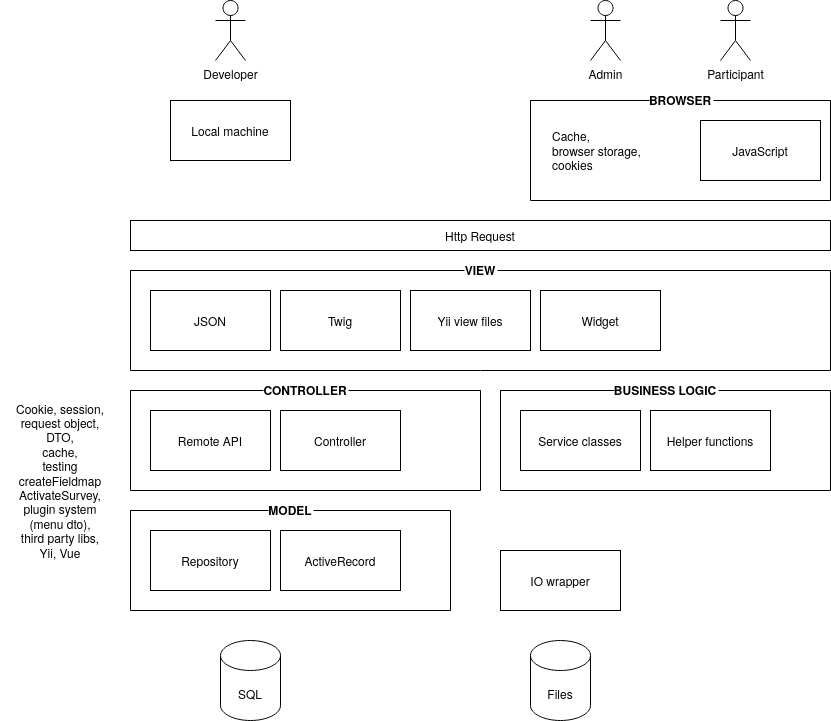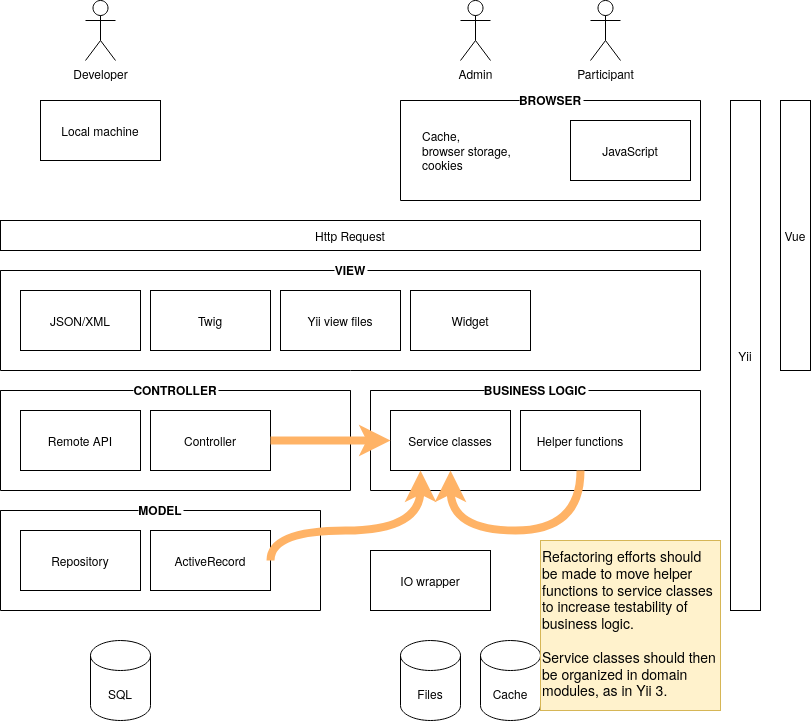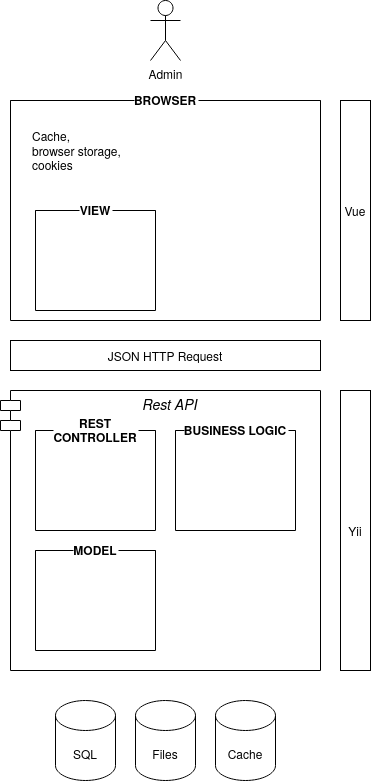LimeSurvey architecture
From LimeSurvey Manual
This is the main public document for LimeSurvey's architecture
Overview
todo, constraints
This is the architectural documentation for the LimeSurvey application. It does not document the ecosystem surrounding it.
The architectural round trip should look like this:
Risk analysis --> quality attributes priority --> architectural decisions
This document should be reviewed, updated and discussed at least yearly.
Vision
todo
Technology stack
Programming languages:
- PHP 7.2+
- JavaScript ES6 (admin) and IE11 compatible (survey taking)
- CSS, HTML
- XML, JSON
Frameworks:
- Yii 1.1
- jQuery
- Vue 1
- PHPUnit
Tools:
- Git
- GitHub Actions
- Psalm
- CodeSniffer
- MessDetector
- Scrutinizer
- Selenium, geckodriver
Dependency management:
- Manually (should be refactored)
- Yarn
- Composer
Libraries:
- CKEditor
- kcfinder
- PDF?
- Sodium
- Twig
- PHPMailer
- pclzip
Risks
As defined in the code quality guide.
Risk identification, analysis, mitigation, monitor.
Product risk
These risks are considering the individual LimeSurvey user or admin.
- Data loss (known or unknown)
- Unauthorized data access
- Blocking bugs (that leads to data loss)
Project risk
todo
- Communication
- Regressions and lack of testing
Business risk
Internal
Quality attributes
Considering the risks above, the most important quality attributes could be considered:
- Testability
- Changeability
They can be improved by using dependency injection, and having clearer separation between the abstraction layers, including splitting the monolith into separate modules.
Function composition and "function core, imperative shell" pattern could also help.
Views
4+1 view model?
Domain
A simple domain diagram over LimeSurvey:
Layers
LimeSurvey uses a basic, monolithic MVC layered architecture.
- View layer, serving HTML, JSON or XML to the calling part (can be browser or local API machine)
- Controller layer, gluing parts together from the other layers
- Business logic layer, calculating business rules, should be fully unit-testable
- Database storage layer (also includes domain entity validation)
Refactoring should be focused on strengthening the separation between the layers.
Overview of future refactoring efforts.
How splitting up a monolith into separate modules could look like:
Possible architecture of REST + SPA module:
Class hierarchy
todo
Controller hierarchy
ActiveRecord hierarchy
Extended core classes
Flow and state
automata between states
admin flow diagram? what makes sense to document? create survey process?
API design
todo
Security
todo




